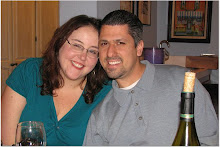
Believe it or not, wine in the kosher world is a very tricky subject, not to mention one with a nasty reputation with vino lovers. When people often think kosher wine, they think of the syrupy disgusting brands that have permeated the market for years that have more of the flavor of grape Dimetapp than a great bottle of Bordeaux.
I am a great wine taster (which I learned from my friend Adam), so I know the difference, and I know a lot about wine making from hanging out with people who actually make the stuff. However, for the untrained eye, you would wonder what makes a bottle of wine kosher or unkosher. After all, it’s grapes and casks, for the most part. But it’s who handles the wines that make it different.
Since wine is often used and blessed in many a religious ceremony, the wine that is considered kosher is highly scrutinized. Sabbath-observant Jews have to be involved in the entire process of the wine-making, from the picking of the grapes to fermentation and bottling. Part of the reason why this was done was to make sure that it would remain pure for ritual usage. This also applies to other products that are made from grapes, such as grape juice and balsamic vinegar.
Unless you are very strictly kosher, you probably do not adhere to this ruling. I know many friends who drink non-kosher wine for regular use, but will not bless on anything but the kosher stuff. This was probably partially done due to the fact that we don’t want to feel like we’re drinking cough syrup.
Lucky for us, kosher wine making is no longer limited to the super-sweet stuff. It has taken years for it to become pretty good. I have had some wonderful wines, and one of the best wines that I have ever tasted has been, in fact, a kosher wine (one that’s $80 a bottle, but it’s still really delish). I know quite a few winemakers, and I even got married at a kosher winery. Problem is that although we have come far, we’ve still got a ways to go.
Over the past six years, we have watched as the wine world changed. Wine has become something that common people can embrace for not a lot of coin. Wines from all over the world came pouring in, from Australia to Argentina. Europe and California have no longer cornered the market. In certain cases, the kosher market is responding beautifully, particularly the wine making that has come out of Israel; in other cases, we are desperately in need of improvement, partially in the price of wine.
If you walk into a wine store or Trader Joe’s, you will probably be able to purchase a great bottle of wine that has been rated high for less than $10. Even if it isn’t rated, you can still find great bottles. I am still raving about a $6 bottle of Pinot Noir that my friend Cindy got for me. I am not sure if kosher wine will be able to compete at the same level, providing great wine for great prices. There are a lot of personnel involved in making kosher wine, so it may end up costing more simply because of the labor involved. But if we can, it would be worth it in the long run.
I know this is not an issue for many people who keep kosher and there will always be a demand, but it would be nice if we really began to play with the big boys. Kosher wine has already shown potential to be great, and now it’s time we need to be great for everyone.
So in honor of the wine, I have decided to post a delicious meat recipe that would go perfectly with a red wine.
HERB CRUSTED POT ROAST
1 3 lb. Chuck Roast
1 1/4 cups panko bread crumbs
3 tablespoons mustard
1/4 cup herbes de provance
2 tablespoons garlic powder
3 tablespoons kosher salt
1 tablespoon pepper
1/4 cup olive oil
Preheat the over to 325 degrees.
Place the chuck roast in a baking pan. In a small bowl, combine the bread crumbs, herbes de provance, mustard, garlic powder, salt and pepper. Pour the olive oil slowly and toss bread crumb mixture to coat. Coat the roast with the bread crumb mixture.
Cook the roast for 2 to 2 1/2 hours. Use a thermometer to check the roast’s doneness – I like mine medium rare, so I always go for 145 degrees. If you like well-done, go for 160.
QUICK TIP: The key to a great roast is to pick the right cut of meat. It should have a certain amount of fat to it in order to keep it delicious and juicy.

No comments:
Post a Comment